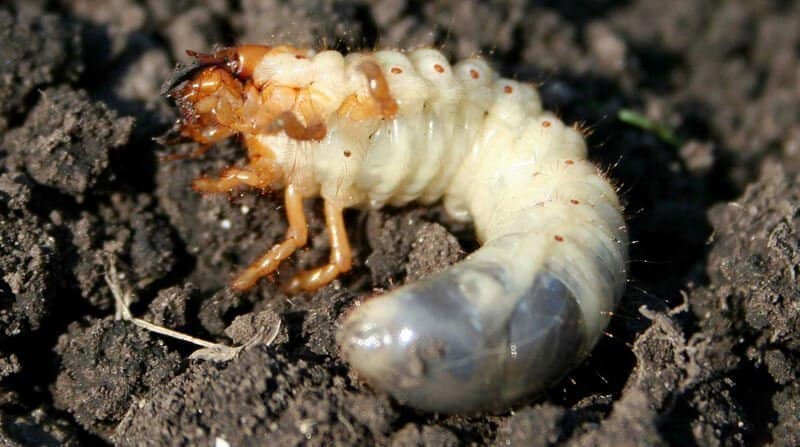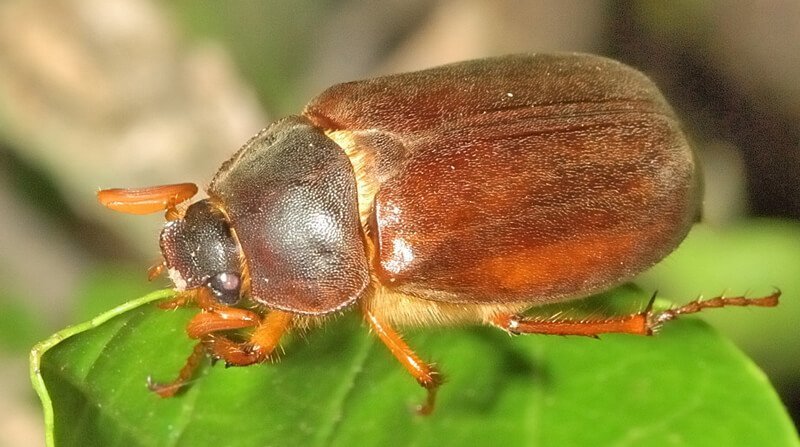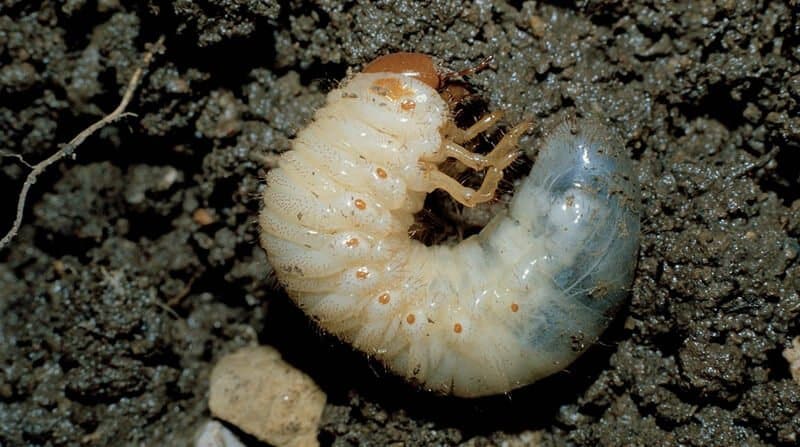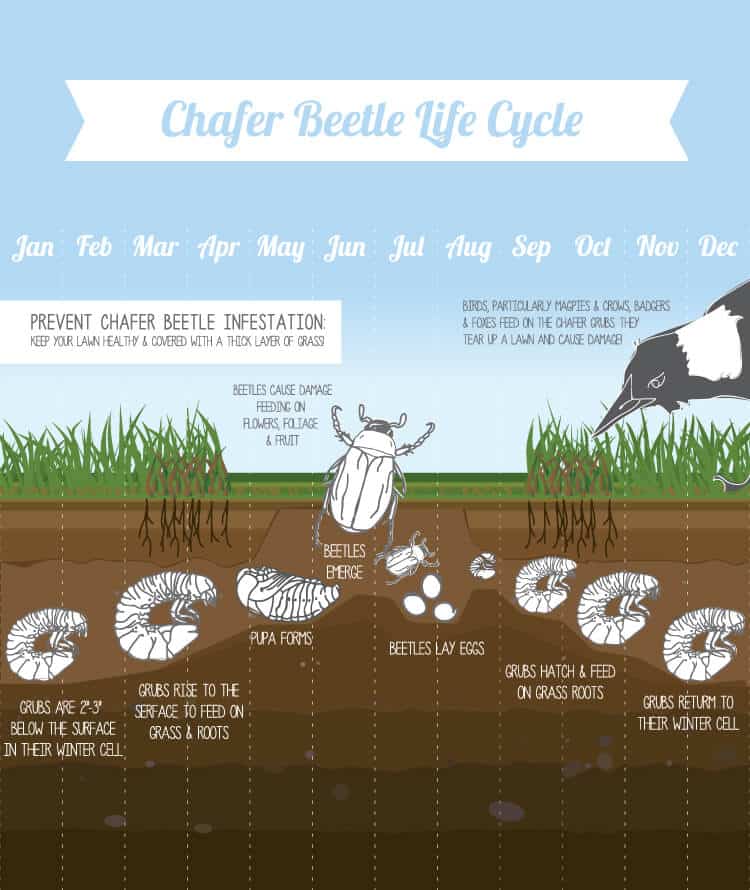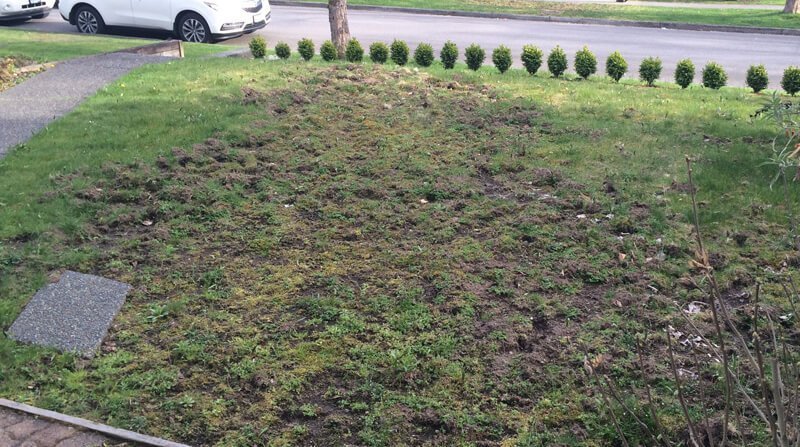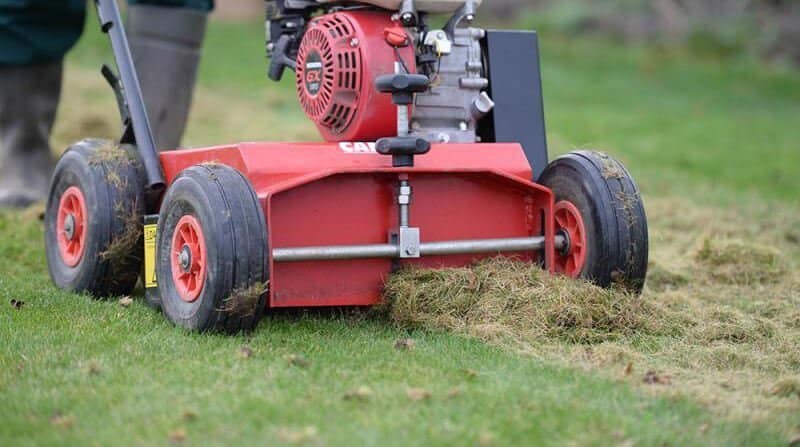Insecticide For Chafer Grubs
Chafer Grubs are the larvae of Chafer Beetles, of which there are six species;
- The Welsh Chafer
- The Summer Chafer
- The Brown Chafer
- The Cock Chafer
- The Garden Chafer
- The Rose Chafer
The most recognisable of these in the UK is the Cock Chafer, a large beetle which you’ll see between May and June. Hence their nickname, the June Bug.
That said, the problems caused in lawns are most commonly caused by the Garden Chafer and the Welsh Chafer.
The beetles themselves don’t cause any damage at all to your lawn. It’s the larvae, or Grub that’s responsible.
What Does a Chafer Grub Look Like?
Chafer Grubs typically have thick, cream coloured bodies that turn darker towards the back end. They have light brown/orange coloured heads and three pairs of legs.
Garden and Welsh Chafer Grubs are typically between 10mm – 15mm long and you’ll see them lay in the soil under the turf in a ‘C’ shape.
When Do Chafer Grub Attacks Occur?
In order to effectively treat (or prevent) a Chafer Grub infestion it helps to understand the life cycle of a Chafer Beetle.
This infographic by Waltons explains it perfectly;
You’ll normally see signs of a Chafer Grub infestation when the grubs are close to the surface, just underneath the turf. Typically in Spring and Autumn.
They can also cause problems in newly cultivated soil and in neglected lawns.
Female beetles burrow into the soil during the summer. They lay their eggs and the larvae hatch out a few weeks later in early autumn when they start to feed on the roots of the grass. They live and feed in the soil for up to 4-5 years depending on the species, pupating over the winter and hatching out as adults in the Spring.
Chafer Grub attacks are very unpredictable.
They can cause huge problems some years and not others and your lawn could be riddled with them and your neighbours might be perfectly OK.
They’re almost impossible to predict but they’re simple enough to spot.
How to Tell if You’ve Got a Chafer Grub Infestation
Chafer Grub invasions are pretty easy to spot.
Often times, patches of your lawn can become yellow and the grass can loosen. This is the result of Chafer larvae causing damage by eating the roots of the grass.
Yellow patches of grass could be caused by other things so if you see it, don’t automatically assume it’s Chafer Grubs. If parts of your lawn turn yellow, remove a small section of turf and if it’s full of grubs, then you’ve got a problem.
If that doesn’t give it away, this will;
This is the result of birds like Jays, Magpies, Rooks and Crows tearing up the lawn so they can feed on the larvae. In the worst cases, Foxes, Hedgehogs and Badgers will dig into your lawn to eat them.
Moles also feed on Chafer Grubs. If you live in rural areas, you might also start to find molehills appearing as they look for food.
What to Do if You Have a Chafer Grub Problem
Depending on the severity of the infestation you may choose to do one of two things;
- Repair the lawn
- Replace the lawn
My preferred method is to replace the lawn, especially if the infestation is particularly bad.
Weight up the costs involved in repairing your lawn versus replacing it. If you’ve only got a small area of grass, it’s often more cost-effective to replace it (and you have a much higher chance of successfully removing the problem).
Repair the Lawn
If the damage isn’t so severe you might get away with repairing your lawn.
If this is the case, follow these instructions;
Step 1: Scarify Your Lawn
If you’ve had an infestation of Chafer Grubs the first thing you should do is scarify your lawn. Here’s why;
- It’ll remove any excess lawn thatch and open the soil up to create a bed on which to grow new grass seed.
- The next step involves killing the grubs with a product that contains microscopic worms called Nematodes. Removing excess thatch and opening up the soil will mean the worms can get into the soil quicker.
You must scarify BEFORE applying the grub killer. If you apply the grub killer and then scarify you’ll disrupt the soil while the Nematodes are trying to work. This will make it less effective.
Insecticide For Chafer Grubs
Chafer grubs are a type of beetle that can cause a lot of damage to your lawn. They like to eat the roots of grass and other plants, which makes them difficult to get rid of.
Chafer grubs are most common in areas with warm climates. They lay their eggs in the soil and then leave them there until they hatch into larvae. These larvae will then eat the roots of grasses and other plants until they grow into adults.
To prevent chafer grubs from destroying your lawn, you should try using insecticide for chafer grubs. This will help eliminate any remaining chafer grubs so they don’t harm your yard anymore!
List Of Insecticide For Chafer Grubs
- Imidacloprid 0.5%
- Merit is for use in and around Turfgrasses, Trees, Shrubs, Evergreens, Flowers, Foliage Plants, Ground Covers.
- Applications of MERIT 0.5 G Insecticide cannot exceed a total of 80 lb (0.4 lb of active ingredient) per acre per year.
Additional Info :
| Item Dimensions | |
| Height | 13 Inches |
| Width | 6 Inches |
| Length | 11.9 Inches |
| Weight | 30.1 Pounds |
- Ortho Home Defense Insect Killer for Indoor & Perimeter2 with Comfort Wand kills ants, cockroaches, spiders, fleas, ticks and other listed bugs; the formula is odor free, won’t stain, and keeps listed bugs out
- KILLS BUGS INSIDE: Kills those annoying home-invading insects, including ants, cockroaches, spiders, fleas, ticks, scorpions, beetles, silverfish, centipedes and millipedes
- KEEPS BUGS OUTSIDE: Creates a bug barrier that will kill bugs you have and prevents new bugs for up to 12 months (applies to ants, roaches and spiders indoors on non-porous surfaces)
- NO STAINING OR STINK: This spray can be used indoors and out, leaves no residue, and has no odor; people and pets may re-enter treated areas after spray has dried
- WAND MAKES APPLICATION EASY: The Comfort Wand eliminates hand fatigue, and there’s no pumping required, making it easy to spray along your home’s perimeter–indoors and outside
Additional Info :
| Color | White |
| Item Dimensions | |
| Height | 4.88 Inches |
| Width | 12 Inches |
| Length | 8.95 Inches |
| Weight | 0.73 Pounds |
- Kills lawn insects: use outdoors on lawns and as a band treatment around your house foundation
- Kills more than 100 insect types: kills insects above and below ground, including ants (excluding harvester and pharaoh ants), crickets, armyworms, cutworms, grubs, ticks and others as listed
- Kills on contact: treat when insects first appear or when you notice lawn damage
- Controls grubs: treat any time between late July and early October
- Granular formula: distribute granules uniformly around the treatment area; water in lightly immediately after application
Additional Info :
| Item Dimensions | |
| Height | 18.75 Inches |
| Width | 2.75 Inches |
| Length | 11 Inches |
| Weight | 10 Pounds |
